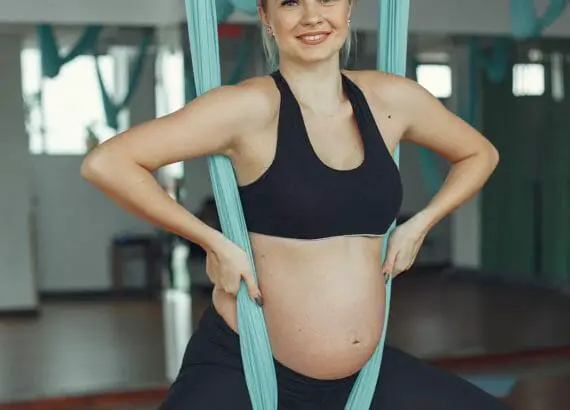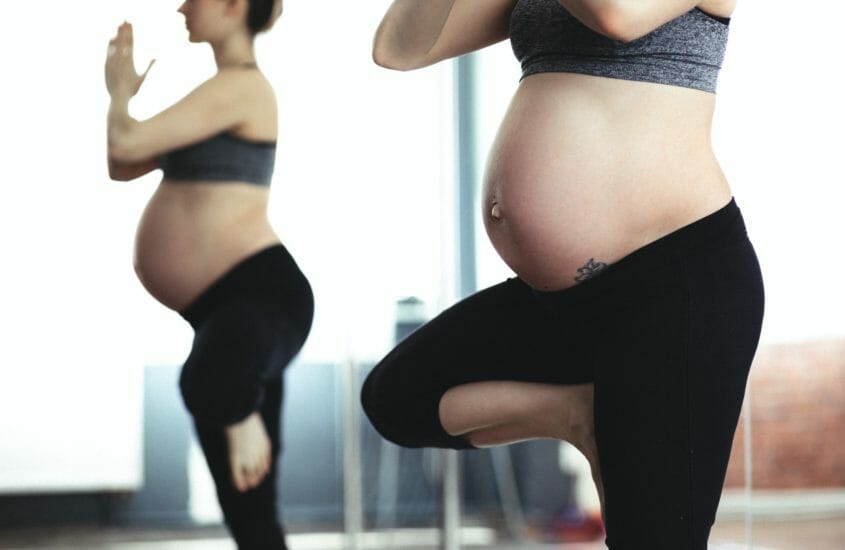There are many reasons to practice yoga during pregnancy. It can provide a sense of calmness, help with back pain and headaches, and even prepare you for labor. But which poses should pregnant women try? This blog post will list some of the most beneficial prenatal yoga practices that you can do in your first trimester. It will be a guide to prenatal yoga in the first trimester. We hope that this is helpful!
What you will learn
Guide to Prenatal Yoga in the First Trimester:
What is Prenatal Yoga?
Prenatal yoga is a type of exercise that can help pregnant women with their physical and emotional health. The exercises are designed to be safe for the mother and baby, as well as enjoyable. There are many benefits of prenatal yoga including reduced back pain, improved sleep quality, increased energy levels, and decreased anxiety.
What are the best yoga poses in the first trimester?
There are many poses that pregnant women can practice during the first trimester. Here are some extra good ones:
Standing forward bend
Standing forward bend is beneficial in the first trimester because it can help you stretch your spine. It also helps with blood circulation and will release any tension in the back muscles that may have built up from sitting all day at work or school.
Cat/Cow Pose
Catus posterioris stretches out back muscles while cow sequence opens up chest cavity for easier breathing to nurture the growing lungs inside the womb.
Seated Twist
Seated twist pose during pregnancy is a great way to release tension and reduce stress.
Sit on your mat cross-legged, then lower right knee down onto the floor while keeping your left leg folded in front of you at an angle 90 degrees or higher from hips over thigh (left foot will be sitting next to the top/near base). Bend torso forward placing both hands around outside edge opposite shin for extra support as needed by pressing palms together above ankle before entering twist with one hand pointing up towards the ceiling while other points downwards near tailbone) This pose helps alleviate back pain that can develop throughout pregnancy. Twists really help relieve pressure off of the spine caused by a growing baby bump! ! If this doesn’t feel comfortable though try another kind of seated spinal twist.

Child’s Pose
Child pose during pregnancy is a great way to release tension in your back and neck, as well get some deep breaths while relaxing. This is also an exercise that you can do from home because it doesn’t require any equipment! This pose will help alleviate pressure on the spine caused by your growing uterus so take advantage of this opportunity for relief when possible!) Childs Pose should be done with feet wider than hips (but not too wide)and knees at or below heart level. It helps if there are blocks available behind your body just under the shoulder blades). Then find a seat between heels; sit onto them now before settling down into arms folded around shins/knees
Pigeon Pose
Pigeon pose in pregnancy can be a really great pose for relieving stress and tension. It’s also an easy one to do at home without any equipment!
Downward Facing Dog
Downward Facing Dog can benefit pregnant women because it stretches the calves, hamstrings, and back.
It also strengthens your arms so that you can do this pose on a regular basis for these reasons alone! It’s important to make sure hips are parallel with heels before starting any downward dog because it could be unsafe if they’re not positioned accordingly) This is an asymmetrical stretch which means one side of the body will feel different than the other but both sides benefit from doing Downward Facing Dog). When beginners start off in Forward Fold there should really just focus down through their toes as much as possible while still being able-bodies enough when bending at knees/knees touches the floor), then walk hands out slightly wider apart.
The best way to decide which positions you want to try is by listening to your body because every woman has different needs at each stage of pregnancy as well as a unique shape of their uterus – it all depends on how far along in her term she happens to be when practicing yoga postures. It can also depend on any medical conditions she may have or if she is expecting twins. Another determining factor is if someone may have had problems carrying babies before like miscarriages etc…
Conclusion
Practicing yoga during the first trimester is not as different as when someone is not pregnant, but it requires a bit more precaution.
The main goal of prenatal yoga during the first trimester should be to get comfortable with your changing body and focus on adjusting postures based on how you feel at that moment. With patience and an open mind, anyone can learn about their own self-care practice. Taking care of yourself and your baby. It’s never too late. Hopefully you enjoyed reading this guide to prenatal yoga in the first trimester.
